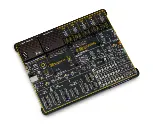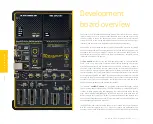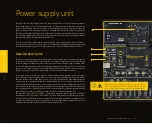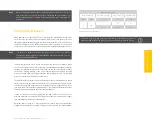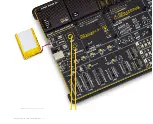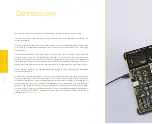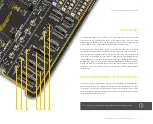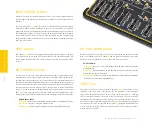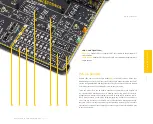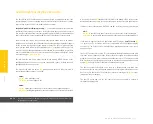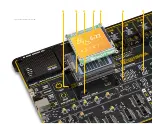
P A G E 8
E a s y P I C v 8 f o r P I C 2 4 / d s P I C 3 3
M a n u a l
P O W E R S U P P L Y
P A G E 8
Power supply unit
The power supply unit (PSU)
(1)
provides clean and regulated power, necessary for proper operation of
the development board. The host MCU, along with the rest of the peripherals, demands regulated and
noise-free power supply. Therefore, the PSU is carefully designed to regulate, filter, and distribute the
power to all parts of the development board. It is equipped with three different power supply inputs,
offering all the flexibility that EasyPIC v8 for PIC24/dsPIC33 needs, especially when used on the field. In
the case when multiple power sources are used, an automatic power switching circuit with predefined
priorities ensures that the most appropriate will be used.
The PSU also contains a reliable and safe battery charging circuit, which allows a single-cell Li-Po/Li-
Ion battery to be charged. Power OR-ing option is also supported, providing uninterrupted power supply
(UPS) functionality when an external or USB power source is used in combination with the battery.
Detailed description
The PSU has a very demanding task of providing power for the host MCU and all the peripherals onboard,
as well as for the externally connected peripherals. One of the key requirements is to provide enough
current, avoiding the voltage drop at the output. Also, the PSU must be able to support multiple power
sources with different nominal voltages, allowing switching between them by priority. The PSU design,
based on a set of high-performance integrated devices produced by Microchip, ensures a very good
quality of the output voltage, high current rating, and reduced electromagnetic radiation.
At the input stage of the PSU, the MIC2253, a high-efficiency boost regulator IC with overvoltage
protection ensures that the voltage input at the next stage is well-regulated and stable. It is used to
boost the voltage of low-voltage power sources (a Li-Po/Li-Ion battery and USB), allowing the next
stage to deliver well-regulated 3.3V and 5V to the development board. A set of discrete components are
used to determine if the input power source requires a voltage boost. When multiple power sources are
connected at once, this circuitry is also used to determine the input priority level: externally connected
12V PSU
(2)
, power over USB
(3)
, and the Li-Po/Li-Ion battery
(4)
. The transition between available
power sources is seamless, providing uninterrupted operation of the development board.
The next PSU stage uses two MIC28511, synchronous step-down (buck) regulators, capable of
providing up to 3A at their output. The MIC28511 IC utilizes the HyperSpeed Control® and HyperLight
Load® architectures, providing an ultra-fast transient response and high efficiency for light loads. Each
of the two buck regulators is used to supply power to the corresponding power supply rail (3.3V and 5V),
throughout the entire development board and connected peripherals.
1
2
3
4
(1)
This image is only for demonstration purpose, please do not
remove the PSU plastic cover nor touch any of the components
below. The development board can be permanently damaged.
E a s y P I C v 8 for P I C 2 4 / d s P I C 3 3
M a n u a l




